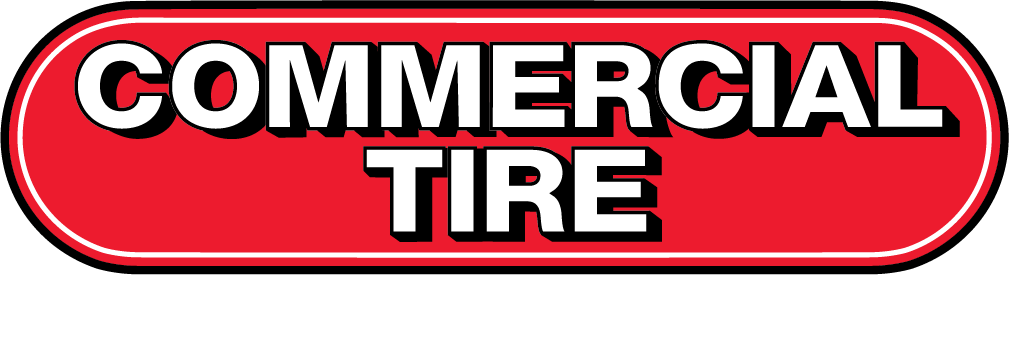Tires are the unsung heroes of our vehicles, gripping the road and ensuring a smooth, safe ride. However, even the best tires can fall victim to wear and tear over time. Understanding what regular or irregular tire wear patterns look like is crucial for both prolonging tire life and ensuring your safety on the road.
The Importance of Tire Rotation
Before we delve into the details of tire wear patterns, let’s emphasize the significance of regular tire rotation. Tire rotation is the practice of moving tires from one position to another on your vehicle, promoting even tread wear – especially important if you’re using all-weather tires, which are designed to perform year-round in varying conditions. This simple maintenance task extends the lifespan of your tires, improves fuel efficiency, and enhances overall driving performance. With regular tire rotations, a Commercial Tire technician would be able to identify any of the following issues.
The Common Tire Wear Patterns and Their Causes

1. Center Wear:
Tires exhibit excessive wear in the center of the tread, while the outer edges remain relatively unaffected.
Causes
- Overinflation: Too much air pressure in the tires leads to the center of the tread carrying most of the vehicle load.
- Improper wheel alignment: Misaligned wheels can cause uneven wear, with the center bearing the brunt of the road.
Solution
Regularly get your tire pressure checked and adjusted according to the manufacturer’s recommendations. If wear persists, have your wheel alignment checked. This is especially important if you drive long distances on highway tires, which are built for extended road use and benefit greatly from consistent wear patterns.
2. Edge Wear:
The outer edges of the tire tread wear down more quickly than the center.
Causes
- Underinflation: Insufficient air pressure causes the outer edges to bear more weight.
- Aggressive driving: Sharp turns and abrupt maneuvers can accelerate edge wear.
Solution
Monitor tire pressure regularly and have tires inflated to the recommended levels. Practice smooth driving habits to reduce excessive wear on the tire edges.
3. Cupping or Scalloped Wear:
Irregular, cup-like depressions appear around the tire, often accompanied by a rhythmic thumping noise.
Causes
- Worn-out shocks or struts: Inadequate suspension leads to uneven tire contact with the road.
- Unbalanced tires: Imbalances cause uneven weight distribution, resulting in cupping.
Solution
Replace worn shocks or struts and ensure the tires are properly balanced.
4. Camber Wear:
Uneven tread wear on one side of the tire, forming a distinctive slant or wedge-like pattern.
Causes
- Improper Camber Angle: The tilt of the wheels in relation to the vertical axis, can cause uneven tire wear.
- Worn Suspension Components: Damaged or worn-out suspension parts, such as struts, control arms, or bushings, can disrupt the proper distribution of weight on the tires.
Solution
Get regular inspections and replace any worn or damaged suspension components. An inspection can identify leaks, loose bolts, or signs of wear in bushings.
How to Identify Tire Wear Patterns & What to Do If You Spot Irregular Wear
Regular tire inspections are key to identifying wear patterns before they become severe. Follow these steps.
1) Visual Inspection: Regularly examine each tire for signs of wear. Look for uneven tire tread depth and abnormal patterns.
2) Tire Pressure Check: Regularly check that your vehicle has proper tire pressure. Underinflated or overinflated tires contribute to uneven wear patterns.
3) Hands-On Inspection: Run your hand along the tread surface to feel for irregularities. Be attentive to any changes in the tire’s texture.
4) Professional Inspection: Come to any Commercial Tire for a free tire analysis. Our trained professionals can identify any type of irregular wear patterns and diagnose underlying issues.
5) Have Your Tires Rotated for Regular Inspections: Follow the recommended tire rotation pattern outlined in your vehicle’s manual. Regular rotation promotes even wear and extends tire life. Learn more about the ideal frequency for tire rotation in our detailed blog on how often to rotate tires.
Extend Tire Life and Enhance Safety Through Regular Maintenance
Understanding tire wear patterns is essential for proactive vehicle maintenance. Regular tire rotation, combined with vigilant inspections, can significantly extend the life of your tires and contribute to a safer driving experience. Don’t let tire wear catch you off guard—stay informed, stay safe, and keep your wheels rolling smoothly down the road.
For further assistance, visit or call your local Commercial Tire and learn about our tire services today. For more insights into different tire choices suitable for your vehicle, check out our guide on the types of tires as well.
